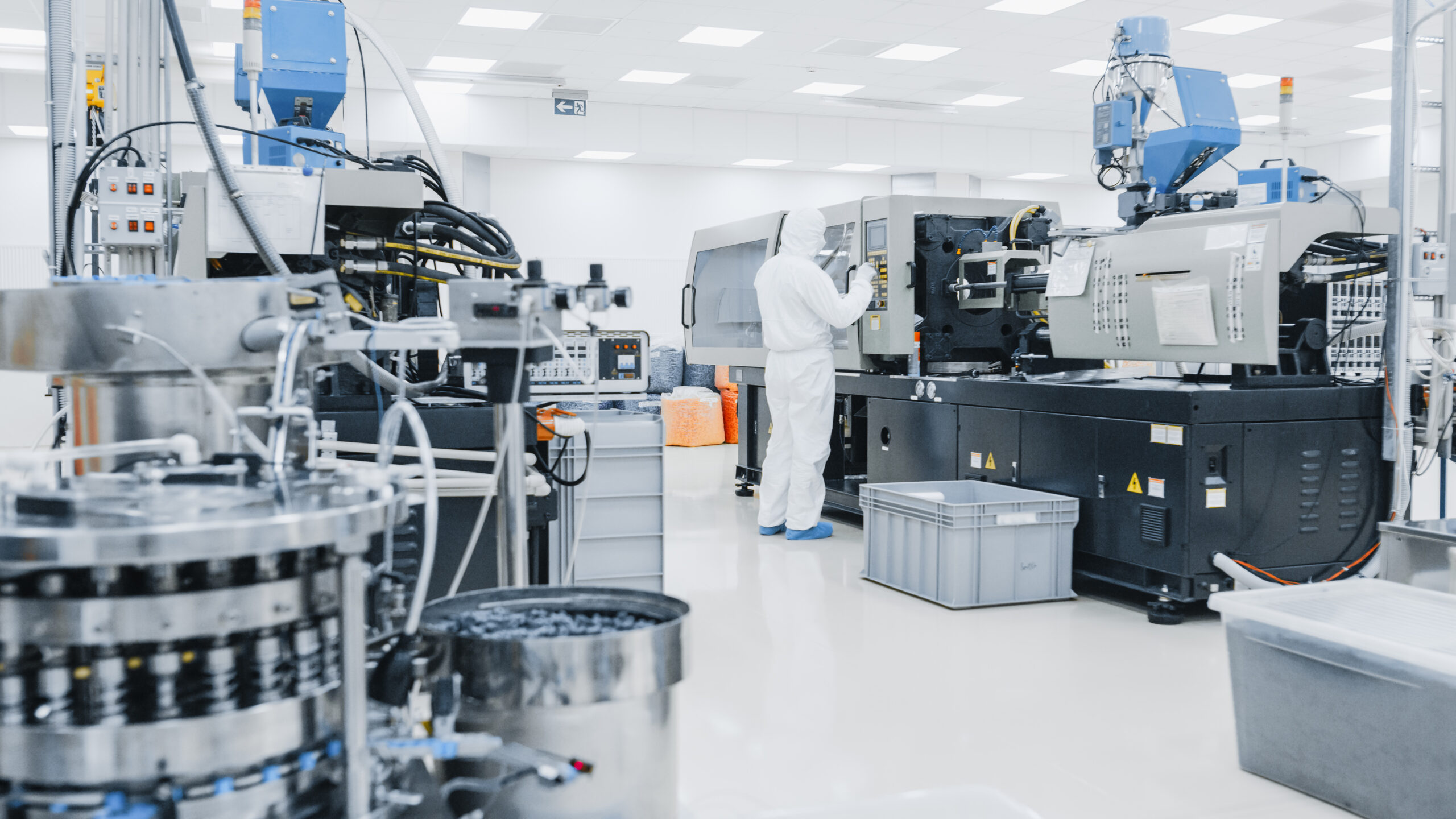Chemical vapor deposition (CVD) processes rely on process gases for the transport of volatile precursors and byproducts. Performing process gas analysis on exhaust streams in CVD applications provides insight into the chemical reactions that occur at the surface of the substrate, enabling CVD processes to be monitored and optimized. In this article, we’re looking at the fundamentals of CVD and exploring how process gas analysis solutions from Hiden Analytical can help ensure the optimal performance of CVD processes.
Chemical Vapor Deposition Fundamentals
Chemical vapor deposition (CVD) is the collective name for a group of processes that use chemically reactive vapors to produce high-quality and high-performance solid coatings on substrates.

In CVD, a substrate is exposed to one or more volatile precursors in a vapor phase. These precursors react and/or decompose on the substrate to form a nonvolatile coating. Many CVD processes have been developed, including hot filament CVD, atomic layer deposition (ALD) and metalorganic chemical vapor deposition (MOCVD) – together, these techniques open up a world of surface functionalization that exceeds the capabilities of other coating technologies.
One of the primary benefits of CVD is that it can produce coatings with excellent conformality: high-quality uniform coatings over the surface of complex 3D structures. This stands in contrast to physical vapor deposition (PVD) techniques, which are typically “line-of-sight” approaches. While PVD coatings exhibit pronounced directional effects due to the motion of particles from target to substrate, often resulting in unevenness; CVD allows vapor to flow easily around the substrate, reacting at all exposed parts and producing an even coating with no directional effects.1,2
CVD can be used to deposit extremely thin coatings of a wide range of materials – including silicon nitride as an insulator in semiconductor applications, amorphous polysilicon in photovoltaic devices or flat panel displays, and refractory metals and ceramics for protecting turbine blades and industrial components.3,4
The Importance of Process Gas Analysis in CVD
Process gases are used in all types of CVD processes. Distinct from precursor gases, which form the vapor and coatings; process gases are used to transport precursor gases into the reaction chamber and to transport volatile byproducts out of the reaction chamber through an exhaust pipe.
Process gas analysis provides additional information about the chemical processes inside the reaction chamber. By monitoring the chemical species in the exhaust gases, process gas analysis enables CVD processes to be optimized and fine-tuned for specific applications. For example, if process gas analysis shows a high concentration of unreacted precursors, this is an indication that precursor flow rate could be reduced. Conversely, if deficient concentrations of precursors are detected during process gas analysis, this could indicate that the substrate is not being fully coated.
CVD Process Gas Analysis Solutions
With over 40 years of expertise in designing, developing and manufacturing quadrupole mass spectrometers, Hiden Analytical produce a full range of process gas analysis solutions.
We’ve developed specialized mass spectrometer solutions tailored to provide accurate process gas analysis in any CVD process, providing manufacturers and researchers with valuable insight into gas reactions during vapor deposition. When developing or monitoring CVD processes, process gas analysis systems must be able to respond rapidly and accurately to minute fluctuations in target gases. Hiden Analytical process gas analysis systems provide real-time analysis of almost any gas with unparalleled sensitivity, accuracy and reproducibility; providing manufacturers and researchers with the insight they need to develop their CVD processes.
Get in touch with Hiden Analytical today to find out more about our range of process gas analysis solutions for chemical vapor processes including MOCVD and ALD.
References and Further Reading
- Dobkin, D. & Zuraw, M. K. Principles of Chemical Vapor Deposition. (Springer Science & Business Media, 2003).
- Behera, A., Mallick, P. & Mohapatra, S. S. Nanocoatings for anticorrosion. in Corrosion Protection at the Nanoscale 227–243 (Elsevier, 2020). doi:10.1016/B978-0-12-819359-4.00013-1.
- Takatsuka, H., Yamauchi, Y., Kawamura, K., Mashima, H. & Takeuchi, Y. World’s largest amorphous silicon photovoltaic module. Thin Solid Films 506–507, 13–16 (2006).
- Coatings for Turbine Blades. https://www.phase-trans.msm.cam.ac.uk/2003/Superalloys/coatings/index.html.

